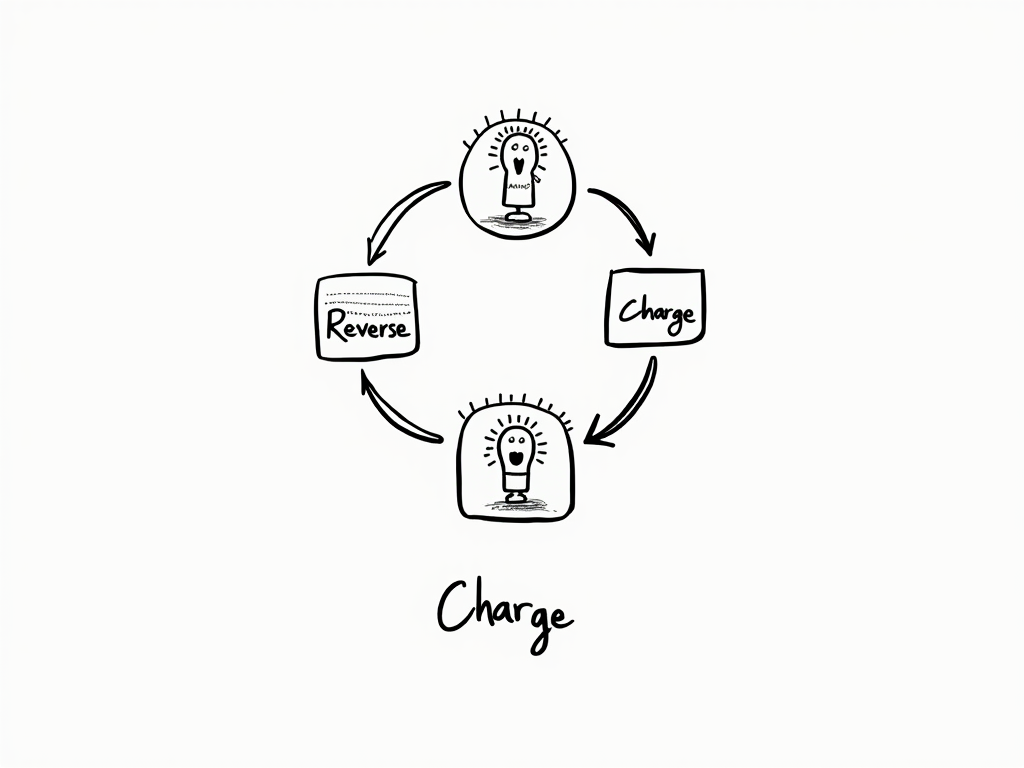
Avoiding Common VAT Mistakes in Poland: A Strategic Guide for Business Success
Reading time: 12 minutes
Table of Contents
- Introduction to the Polish VAT System
- VAT Registration Requirements and Procedures
- Most Common VAT Mistakes in Poland
- Real-World Case Studies
- Building Robust VAT Compliance Systems
- Leveraging Technology for VAT Management
- Future VAT Changes and How to Prepare
- Conclusion
- Frequently Asked Questions
Introduction to the Polish VAT System
Navigating the Polish Value Added Tax (VAT) system can feel like traversing a complex labyrinth with expensive penalties lurking around wrong turns. With standard rates at 23%, reduced rates of 8%, 5%, and 0% for specific goods and services, and frequent regulatory updates, even seasoned financial professionals can find themselves trapped in costly compliance errors.
The stakes are significant—incorrect VAT handling can lead to substantial financial penalties, interest charges, and potentially even criminal liability in cases of deliberate tax evasion. Beyond these immediate concerns lies the operational disruption: tax audits consuming valuable time and resources that could otherwise drive your business forward.
Well, here’s the straight talk: Successful VAT management isn’t about perfection—it’s about strategic navigation, systematic approaches, and staying one step ahead of regulatory changes.
In this comprehensive guide, we’ll explore the most common VAT pitfalls in Poland and provide actionable strategies to avoid them, helping you transform potential tax complications into operational advantages.
VAT Registration Requirements and Procedures
Before diving into common mistakes, it’s essential to understand when and how VAT registration is required in Poland. The registration threshold stands at PLN 200,000 (approximately €45,000) of annual taxable turnover—significantly lower than in many EU countries.
However, several scenarios require immediate VAT registration regardless of turnover:
- Foreign businesses making taxable supplies in Poland
- Companies engaging in intra-EU acquisitions
- Businesses providing services where the place of supply is Poland under reverse charge mechanisms
- Entities dealing with goods subject to excise duty
Registration Process:
- Complete registration form VAT-R
- Submit supporting documentation (company registration, articles of association)
- Provide proof of business substance in Poland (if applicable)
- Register for the EU VAT Information Exchange System (VIES) if conducting intra-EU trade
Professor Marek Nowak of the Warsaw School of Economics notes: “Many businesses, particularly foreign entities, underestimate the complexity of Polish VAT registration requirements. The common misconception that registration can wait until substantial business activity begins has led to significant penalties. In Poland, the obligation often precedes the actual commencement of operations.”
Most Common VAT Mistakes in Poland
Documentation Errors
Documentation forms the backbone of VAT compliance, yet it’s where many businesses stumble first. Let’s examine the most prevalent documentation mistakes:
Incomplete or Incorrect Invoices
Polish tax authorities are particularly stringent about invoice requirements. Missing even one required element can lead to rejected input VAT deductions. Essential invoice elements include:
- Sequential invoice numbering
- Issue date and supply date (if different)
- Full supplier and customer details (including correct VAT identification numbers)
- Precise description of goods/services
- Quantity and unit price
- Taxable amount per VAT rate
- VAT rate and amount
- Indication of VAT exemption or reverse charge mechanisms (when applicable)
Quick Scenario: A manufacturing company lost over PLN 120,000 in deductible VAT because their procurement system wasn’t configured to validate supplier invoices against Polish requirements. Simple validation procedures could have prevented this substantial loss.
Missing Supporting Documentation
Beyond basic invoices, Polish VAT regulations often require additional supporting documentation:
- Transport documents proving actual delivery for 0% export supplies
- Evidence of customer VAT registration for intra-EU supplies
- Proof of service delivery for intangible services
- Documentation of payment for certain VAT schemes
Pro Tip: Implement a documentation checklist specific to each transaction type in your business. This simple procedure has helped numerous companies reduce documentation errors by over 70%.
Timing and Reporting Missteps
The temporal aspects of VAT compliance represent another major risk area for businesses operating in Poland. Timing errors typically fall into these categories:
Incorrect VAT Point Determination
The Polish VAT system determines the tax point (when VAT becomes due) based on specific rules:
- Generally, it’s when goods are delivered or services completed
- For continuous services, the end of each billing period
- When payment is received in specific cases (advances, construction services)
A common mistake occurs when businesses use invoice dates as tax points for all transactions, which can lead to early or late VAT payments and potential penalties.
Missing Deadlines for Filing and Payment
The Polish VAT filing calendar is strict:
- Monthly VAT returns due by the 25th of the following month
- Quarterly returns (for small taxpayers only) by the 25th after quarter-end
- JPK_VAT (SAF-T) files must accompany all returns
- Intrastat returns for intra-EU transactions by the 10th of the following month
- EC Sales Lists for services by the 25th of the following month
The consequences of missed deadlines escalate quickly, with interest charged at approximately 8% annually and potential additional penalties of up to 30% of the tax underpayment.
Cross-Border Transaction Pitfalls
International transactions introduce additional complexity to VAT compliance, with these common mistakes:
Incorrect Treatment of Intra-EU Supplies
For goods moving between EU countries, businesses frequently make these errors:
- Failing to verify the VAT number of the EU customer
- Not maintaining sufficient evidence of goods transport across borders
- Incorrectly applying domestic VAT to qualifying zero-rated supplies
- Missing EC Sales List reporting requirements
According to data from the Ministry of Finance, incorrect handling of intra-EU supplies resulted in over PLN 1.2 billion in tax adjustments in 2022 alone.
Import/Export Complications
For non-EU trade, common pitfalls include:
- Incorrect customs classification affecting VAT treatment
- Improper documentation for VAT exemptions on exports
- Misunderstanding import VAT postponement schemes
- Failing to claim available VAT refunds on foreign expenses
Case Example: An e-commerce retailer shipping to non-EU customers incorrectly charged domestic VAT, creating both unhappy customers and tax compliance issues. Implementing proper export procedures increased their competitive edge while ensuring compliance.
Real-World Case Studies
Case Study 1: Manufacturing Company Transformation
A medium-sized manufacturing company operating in Wrocław faced repeated VAT audits resulting in significant adjustments. Their primary issues included:
- Inconsistent documentation for intra-EU material purchases
- Late recognition of VAT on imported machinery
- Incorrectly applied VAT rates on their product range
The solution involved implementing:
- A centralized documentation management system with built-in validation checks
- Staff training on Polish VAT regulations specific to manufacturing
- Quarterly VAT health-checks with external advisors
- VAT mapping for their entire product catalog
Result: Within 12 months, the company eliminated VAT adjustments, successfully passed a comprehensive tax audit, and reduced the finance team’s time spent on VAT compliance by 40%.
Case Study 2: E-commerce Platform Restructuring
An international e-commerce platform selling to Polish consumers accumulated over PLN 800,000 in VAT penalties due to:
- Failure to register for VAT despite exceeding thresholds
- Incorrect VAT treatment of digital services
- Inadequate invoicing procedures for Polish customers
The restructuring approach included:
- Immediate VAT registration and voluntary disclosure of past liabilities
- Implementation of automated VAT determination based on customer location
- Integration with the Polish e-invoicing system (KSeF)
- Creation of country-specific VAT compliance calendars
Result: The business negotiated reduced penalties, established compliant operations, and created scalable VAT processes for further European expansion.
Building Robust VAT Compliance Systems
Creating a systematic approach to VAT compliance can transform this tax obligation from a business risk to a well-managed process:
Structuring Internal VAT Procedures
Effective VAT management requires clearly defined procedures:
- Transaction classification framework – Define clear rules for VAT treatment of each transaction type
- Documentation workflows – Establish verification procedures for both incoming and outgoing documents
- Compliance calendar – Create automated reminders for all filing and payment deadlines
- Responsibility matrix – Clearly assign VAT compliance roles across the organization
- Escalation procedures – Develop protocols for handling VAT uncertainties
Dr. Anna Kowalczyk, Tax Director at a major consulting firm, advises: “The most successful companies treat VAT compliance not as an accounting function but as a cross-departmental responsibility. When sales, procurement, logistics, and finance all understand their role in VAT compliance, error rates drop dramatically.”
Regular Self-Auditing Processes
Proactive detection of VAT issues before tax authorities find them significantly reduces risks:
- Conduct monthly sample testing of transaction documentation
- Perform quarterly reconciliations between VAT returns and accounting records
- Review unusual transactions or new business activities for VAT implications
- Verify tax point determination across transaction categories
- Analyze VAT rate applications, especially for new products or services
Pro Tip: Many businesses have found success implementing a “VAT buddy system” where team members cross-check each other’s work before submission to authorities.
Leveraging Technology for VAT Management
Poland has been at the forefront of tax digitalization in Europe, making technology essential for compliance:
Mandatory and Optional Tax Technology
Understanding which systems are required versus advantageous:
| Technology System | Mandatory Status | Implementation Timeline | Business Impact | Penalty Risk |
|---|---|---|---|---|
| JPK_VAT (SAF-T) | Mandatory | Already implemented | High – requires detailed transaction data | PLN 500 per error |
| KSeF (e-Invoicing) | Optional now, mandatory from 2025 | Phased implementation | Very high – requires system changes | Future penalties expected |
| Split Payment | Mandatory for specific sectors | Already implemented | Medium – affects cash flow | 30% of underpaid tax |
| White List Verification | Mandatory for transactions >15,000 PLN | Already implemented | Medium – requires payment verification | 30% of payment amount |
| VAT Analytics Software | Optional but recommended | Business decision | Low implementation, high benefit | N/A – reduces other penalty risks |
According to a 2023 survey by the Association of Polish Accountants, businesses using specialized VAT software reported 62% fewer compliance errors compared to those using general accounting systems.
Automation Opportunities
Strategic automation can dramatically reduce VAT risks:
- Invoice validation – Automated checking of mandatory elements
- VAT number verification – API integration with VIES
- Rate determination – Product/service code mapping to correct VAT rates
- Reporting extraction – Automated data preparation for VAT filings
- Compliance calendar – Automated deadline reminders
Quick Scenario: A distribution company reduced their VAT compliance workload by 70% after implementing automated supplier invoice validation and VAT number verification, allowing their finance team to focus on strategic tax planning rather than error correction.
Future VAT Changes and How to Prepare
The Polish VAT landscape continues to evolve, with several significant changes on the horizon:
Upcoming Regulatory Changes
- Mandatory KSeF e-Invoicing – Moving from voluntary to required use of the national e-invoicing platform in 2025
- Expanded Split Payment – Likely extension to additional business sectors
- VAT Group Regulations – New provisions for group taxation
- E-commerce VAT Adjustments – Refinement of rules for digital marketplaces
- SLIM VAT 3 – Further simplification initiatives expected
Preparing for these changes requires:
- Regular monitoring of announcements from the Ministry of Finance
- Creating an implementation roadmap for required system changes
- Budgeting for compliance technology investments
- Staff training on upcoming requirements
- Testing periods for new procedures before mandatory deadlines
As Jan Kowalski, Tax Partner at a leading Polish law firm, explains: “The digitalization of VAT in Poland represents both a challenge and an opportunity. Companies that embrace these changes proactively often discover improved financial visibility alongside compliance, while those who resist face increasingly severe penalties.”
Conclusion
Navigating the Polish VAT system successfully requires much more than familiarity with tax rates. It demands a strategic approach that combines detailed knowledge of regulations, robust internal processes, appropriate technology, and forward planning.
The most common VAT mistakes in Poland—documentation errors, timing missteps, and cross-border transaction issues—can be systematically addressed through procedures that make compliance a natural part of business operations rather than an afterthought.
The digital transformation of the Polish tax system continues to accelerate, making technology investments increasingly important for compliance. Businesses that view these requirements as opportunities to improve their overall financial management often find competitive advantages beyond mere tax compliance.
Remember that VAT compliance isn’t just about avoiding penalties—it’s about creating a foundation for sustainable business growth in the Polish market. As tax authorities increase their analytical capabilities through digital tools, the gap between compliant and non-compliant businesses will continue to widen in terms of both risk and administrative burden.
By implementing the strategies outlined in this guide, your business can transform VAT compliance from a potential risk area into a well-managed process that supports rather than hinders your Polish operations.
Frequently Asked Questions
What are the key deadlines for VAT compliance in Poland?
The Polish VAT system operates on a strict timeline: monthly VAT returns must be submitted by the 25th of the following month, along with the JPK_VAT file in the SAF-T format. Payment is due by the same date. Small taxpayers may opt for quarterly filing, but most businesses are required to file monthly. Additionally, Intrastat declarations are due by the 10th of the following month, while EC Sales Lists must be submitted by the 25th. Missing these deadlines triggers automatic interest charges (approximately 8% annually) and potential administrative penalties up to 30% of the tax amount in severe cases of non-compliance.
How can foreign businesses properly manage VAT registration in Poland?
Foreign businesses must navigate Polish VAT registration carefully by first determining if their activities create a registration obligation—which often occurs at lower thresholds than expected. The process requires submitting form VAT-R along with company documentation (typically requiring certified translations), proof of business substance, and in many cases, appointing a fiscal representative. Once registered, foreign entities face the same compliance obligations as domestic businesses, including submitting Polish-format JPK_VAT files and maintaining documentation that meets local requirements. The most successful approach involves securing local tax expertise before commencing Polish operations, rather than retroactively addressing compliance issues that could incur significant penalties.
What steps should businesses take to prepare for the mandatory KSeF e-invoicing system?
Preparing for Poland’s mandatory KSeF e-invoicing system requires a comprehensive approach beginning with a thorough assessment of your current invoicing processes. Technical preparation is critical—evaluate whether your ERP/accounting systems can generate invoices in the required XML format and establish API connections to the KSeF platform. Create a testing timeline that allows for voluntary participation before the mandatory implementation. Develop contingency procedures for system failures, as invoices not properly registered in KSeF won’t be legally valid. Finally, train both financial and operational staff on the new procedures, as the e-invoicing requirements affect multiple departments. Companies that have successfully implemented KSeF report that beginning preparations at least 12 months before the mandatory date significantly reduces disruption.



